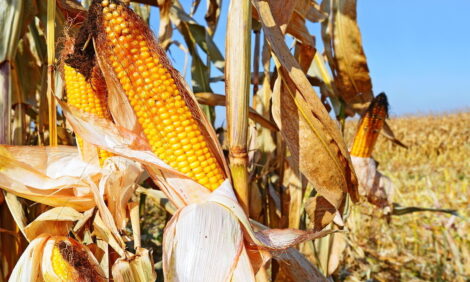



Fighting Brucellosis In Northern Ireland
Northern Ireland has been fighting an epidemic of brucellosis for over 10 years. Significant progress has been made in this time, however there is a minority who persist in spreading the disease for financial gain, reports Charlotte Johnston, TheCattleSite Editor.It wasn't until the late 1990's when brucellosis became a problem in Northern Ireland, as an infection from the South spread. Since then it has been an ongoing epidemic.
Saying this, the level today is much lower than it was two years ago, said Senior Veterinary Officer for the Department of Agriculture's Vet Service, Owen Denny.
Mr Denny has been responsible for overseeing the brucellosis programme. The disease peaked around February 2002, when there were around 50-60 herds breaking down a month.
"Now there are 11-12 herds in Northern Ireland that are confirmed to be infected with brucellosis. And monthly figures are well down, for example last month there were no breakdowns at all," he said.
Colin Smith, Policy Officer of Animal Health and Welfare for the Ulster Farmers' Union, said that the industry had done well to make such significant improvements in the eradication of brucellosis.
The comprehensive brucellosis eradication programme means that all cattle are tested annually and that pre-movement and bulk milk tests are carried out. Surveillance of older female cattle occurs in the abattoir, and all reported abortions are investigated.
The Republic of Ireland were declared free of brucellosis over a year ago, and Mr Denny hopes that Northern Ireland will be in the same position in a few years time.
However, there are two hot spots in Northern Ireland - Armagh and Keady. Without these two areas, Mr Smith said that Northern Ireland would have been free of the disease by now.
Despite the programme in place, it is increasingly difficult to control the disease, said Mr Denny. Due to the compensation available (100 per cent of the value of the animal), there have been malicious attempts from unscrupulous farmers to infect neighbouring herds.
Mr Smith said that this is extremely frustrating for the average farmer. He condoned the behaviour of malicious individuals. In January 2010, a foetus infected with brucellosis was found in a field of young heifers. The foetus was covered in feed, in an obvious bid to attract cattle to it.
Since then, there have been a number of suspicious cases, where herds have become infected with the disease. We have not been seeing sporadic outbreaks, said Mr Smith, instead the outbreaks are confined to these areas, which makes us suspicious that they are all linked to deliberate cases.
At the beginning of March 2011, a calf's leg was found in silage fed to cattle in Armagh, although it was later confirmed that this leg did not carry brucellosis.
Despite no evidence of brucellosis being found, this case is being taken very seriously, Mr Denny said.
The lab that tested the calf's leg, is now trying to match the DNA from it to high risk herds in the area, in order to find where it came from.
Should a match be made, officials will know where the calf came from and will be informing the police.
Mr Denny said that it will take two to four weeks for the labs to check samples.
"Whilst it is a relief that no brucellosis was isolated in this carcase, the risk is not fully eliminated, as we do not have the rest of the calf," said Mr Denny.
When asked whether reducing the amount of compensation was advisable, in order to reduce the incentives of these attacks, Mr Smith said that it would not be fair to the 99 per cent of farmers who are victims.
Mr Denny says farmers must remain vigilant, and keep an eye out for any unusual activity around cattle and on the farm.
All abortions must be reported, and good biosecurity measures should be in place. He advises that no casual visitors should be allowed on farms, cattle should not be allowed to stray and all required tests should be done on time.
Symptoms of brucellosis are very general, and can often be confused as other common problems. Discharge is one of the obvious symptoms, however the only reliable identification of the disease, besides tests, is abortion.
This is when the disease becomes high risk; foetuses, afterbirth and secretion are all highly infectious.
As well as being a risk to other cattle, all of the above can also infect farmers, vets, abattoir workers, staff that test the cattle - anybody who comes into contact with the disease, warns Mr Denny.
Brucellosis is a zoonotic disease, and whilst it affects no more than 15 people a year, it could be used as a biological warfare weapon, he said. The disease can be used against human populations, and portrays a range of symptoms, which can last for months.
It is hoped that this case in March, will be the last, said Mr Smith. Regardless of whether it is or not, it is unbelievable, that some farmers would ruin their neighbours livelihoods for their own benefit.


